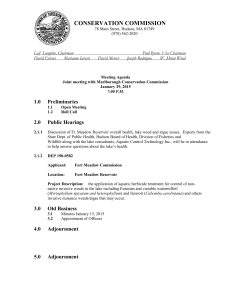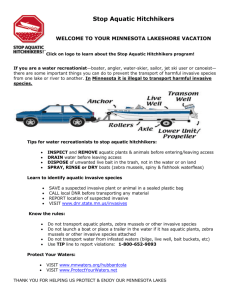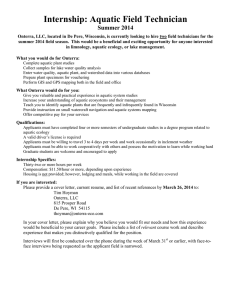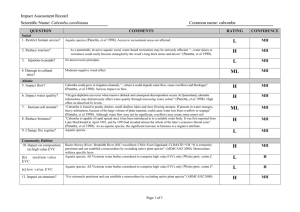Aquatic Invasive Species Quick Guide Carolina Fanwort
advertisement
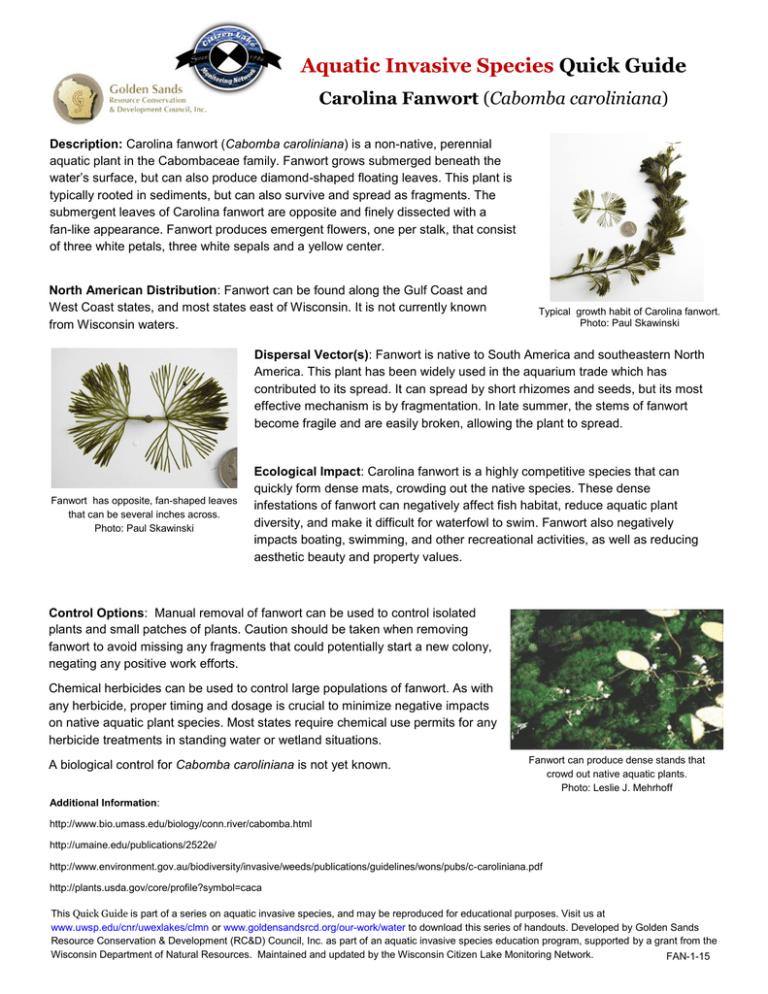
Aquatic Invasive Species Quick Guide Carolina Fanwort (Cabomba caroliniana) Description: Carolina fanwort (Cabomba caroliniana) is a non-native, perennial aquatic plant in the Cabombaceae family. Fanwort grows submerged beneath the water’s surface, but can also produce diamond-shaped floating leaves. This plant is typically rooted in sediments, but can also survive and spread as fragments. The submergent leaves of Carolina fanwort are opposite and finely dissected with a fan-like appearance. Fanwort produces emergent flowers, one per stalk, that consist of three white petals, three white sepals and a yellow center. North American Distribution: Fanwort can be found along the Gulf Coast and West Coast states, and most states east of Wisconsin. It is not currently known from Wisconsin waters. Typical growth habit of Carolina fanwort. Photo: Paul Skawinski Dispersal Vector(s): Fanwort is native to South America and southeastern North America. This plant has been widely used in the aquarium trade which has contributed to its spread. It can spread by short rhizomes and seeds, but its most effective mechanism is by fragmentation. In late summer, the stems of fanwort become fragile and are easily broken, allowing the plant to spread. Fanwort has opposite, fan-shaped leaves that can be several inches across. Photo: Paul Skawinski Ecological Impact: Carolina fanwort is a highly competitive species that can quickly form dense mats, crowding out the native species. These dense infestations of fanwort can negatively affect fish habitat, reduce aquatic plant diversity, and make it difficult for waterfowl to swim. Fanwort also negatively impacts boating, swimming, and other recreational activities, as well as reducing aesthetic beauty and property values. Control Options: Manual removal of fanwort can be used to control isolated plants and small patches of plants. Caution should be taken when removing fanwort to avoid missing any fragments that could potentially start a new colony, negating any positive work efforts. Chemical herbicides can be used to control large populations of fanwort. As with any herbicide, proper timing and dosage is crucial to minimize negative impacts on native aquatic plant species. Most states require chemical use permits for any herbicide treatments in standing water or wetland situations. A biological control for Cabomba caroliniana is not yet known. Fanwort can produce dense stands that crowd out native aquatic plants. Photo: Leslie J. Mehrhoff Additional Information: http://www.bio.umass.edu/biology/conn.river/cabomba.html http://umaine.edu/publications/2522e/ http://www.environment.gov.au/biodiversity/invasive/weeds/publications/guidelines/wons/pubs/c-caroliniana.pdf http://plants.usda.gov/core/profile?symbol=caca This Quick Guide is part of a series on aquatic invasive species, and may be reproduced for educational purposes. Visit us at www.uwsp.edu/cnr/uwexlakes/clmn or www.goldensandsrcd.org/our-work/water to download this series of handouts. Developed by Golden Sands Resource Conservation & Development (RC&D) Council, Inc. as part of an aquatic invasive species education program, supported by a grant from the Wisconsin Department of Natural Resources. Maintained and updated by the Wisconsin Citizen Lake Monitoring Network. FAN-1-15
